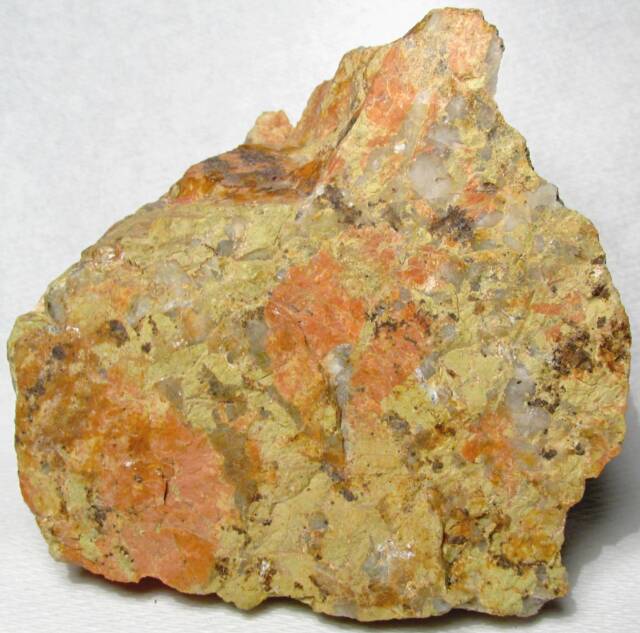Unakite
Photographed by Michael P. Klimetz
Bent Mountain
South Salem
Roanoke County
VIRGINIA
Photographed by Michael P. Klimetz
Bent Mountain
South Salem
Roanoke County
VIRGINIA
Photographed by Michael P. Klimetz
Bent Mountain
South Salem
Roanoke County
VIRGINIA
Photographed by Michael P. Klimetz
Bent Mountain
South Salem
Roanoke County
VIRGINIA
Photographed by Michael P. Klimetz
Bent Mountain
South Salem
Roanoke County
VIRGINIA
Photographed by Michael P. Klimetz
Bent Mountain
South Salem
Roanoke County
VIRGINIA

Photographed by Michael P. Klimetz
Bent Mountain
South Salem
Roanoke County
VIRGINIA

Photographed by Michael P. Klimetz
Bent Mountain
South Salem
Roanoke County
VIRGINIA
Unakite was initially identified in the Unaka Range of Tennessee and North Carolina from which it derived its name. Unakite is essentially an altered granite comprised of salmon-colored orthoclase feldspar, green epidote, and generally milky to colorless quartz. It is also referred to as an epidotized or epidote granite. It exists in various shades of green and pink, is coarse grained, and usually mottled in appearance. An even-textured is considered to be of good quality and is considered a semiprecious stone. Unakite will take a good polish and is often used in architectural applications and in the lapidary industry in the form of beads, cabochons and sculpture. Exposures adjacent to high strain zones and in the metamorphic core of the Blue Ridge Mountains unakite grades into a strongly foliated epidotized augen gneiss. The dominant green epidote in unakite rocks is thought to be the result of the alteration of plagioclase feldspar during low-grade/metasomatic to moderate metamorphism, leaving the orthoclase and quartz component texturally and mineralogically largely unaffected.